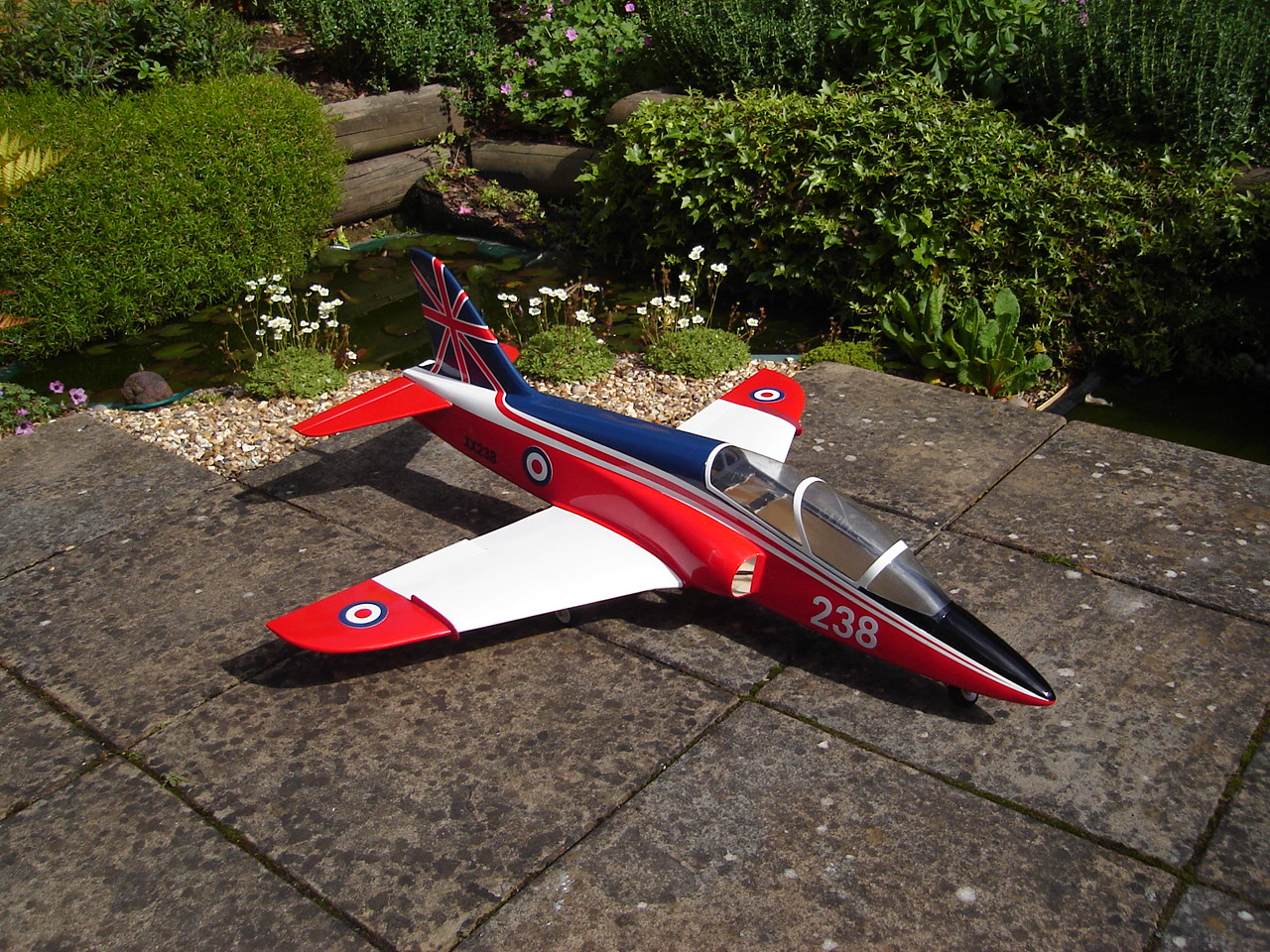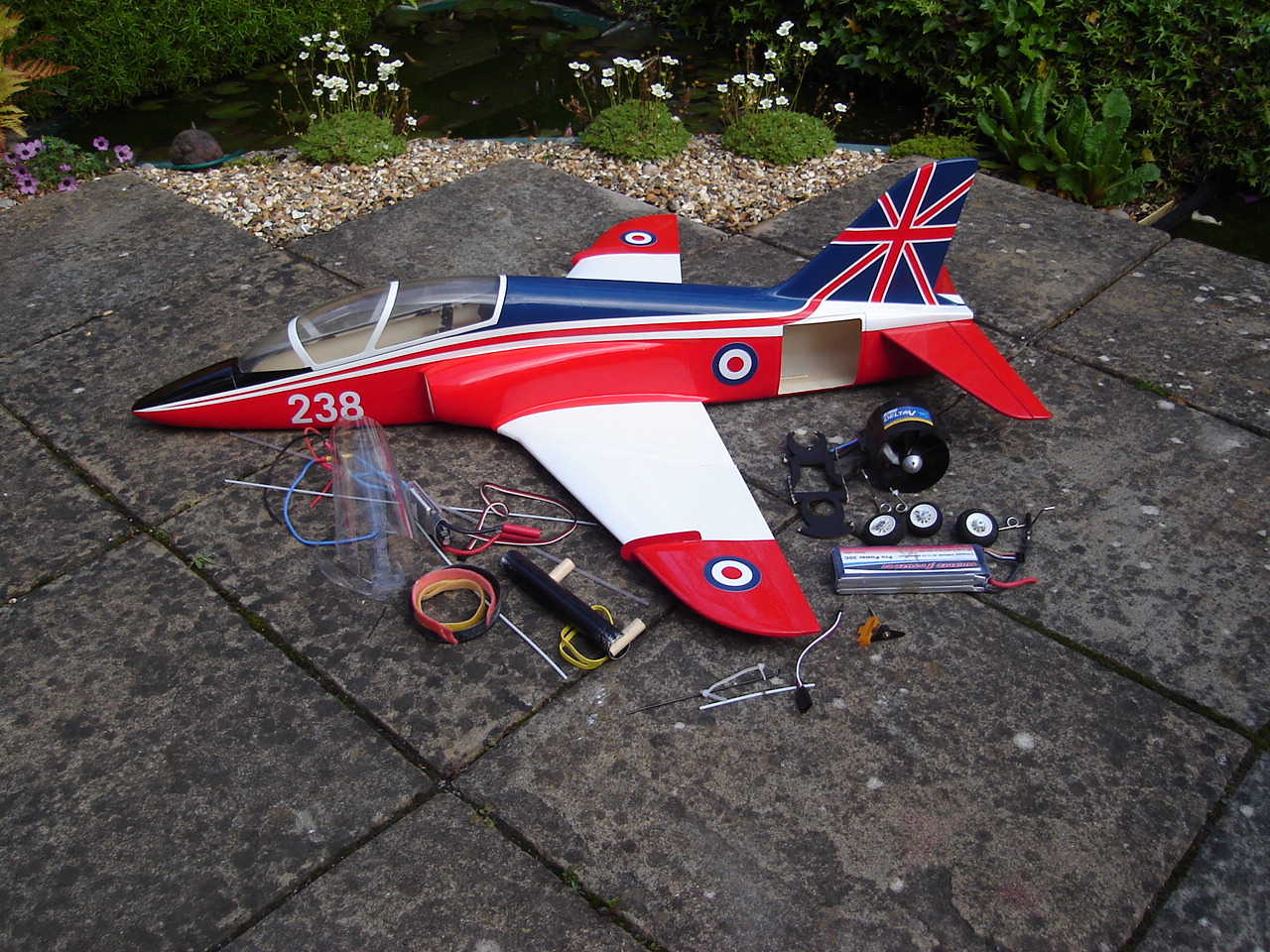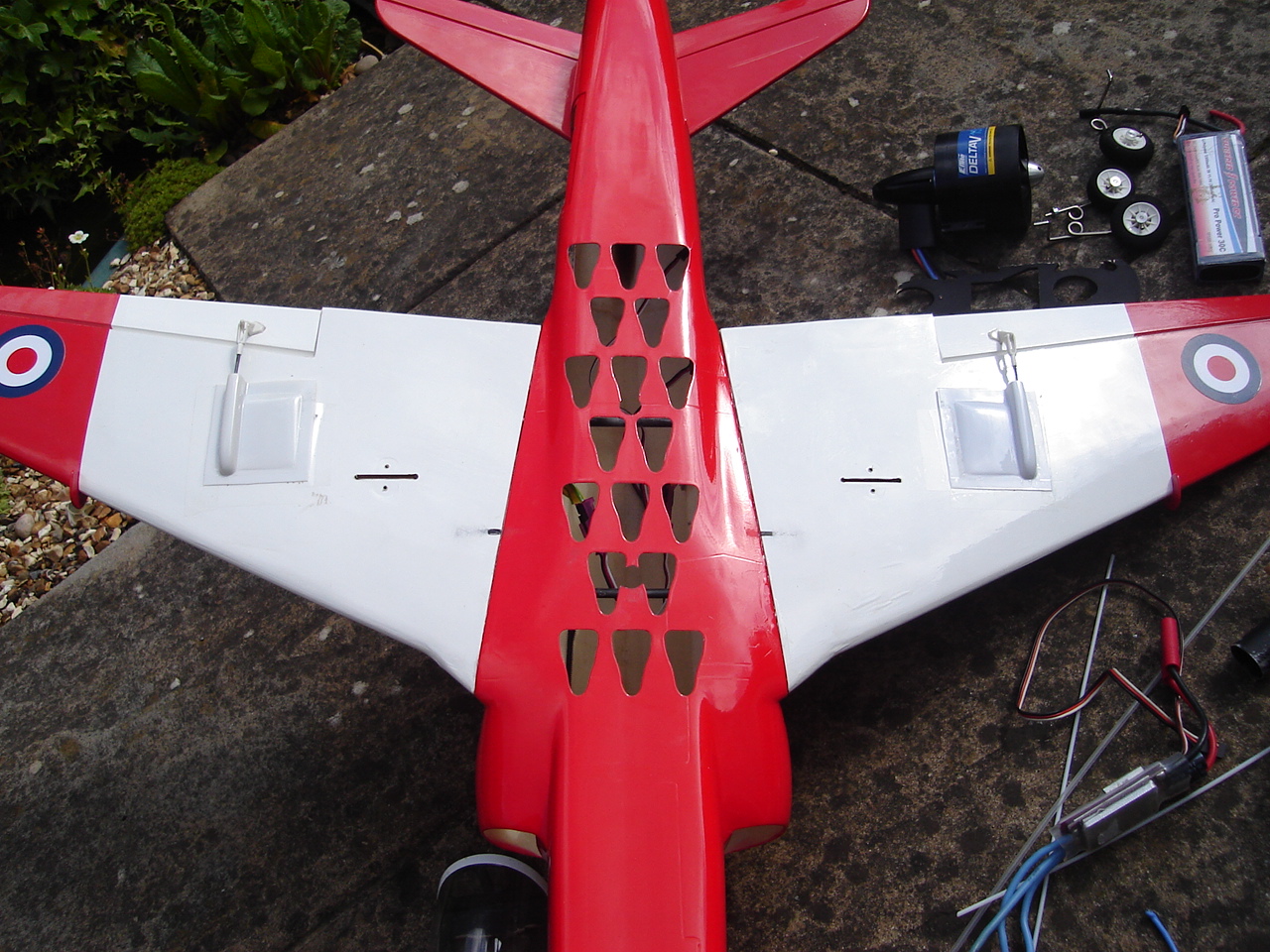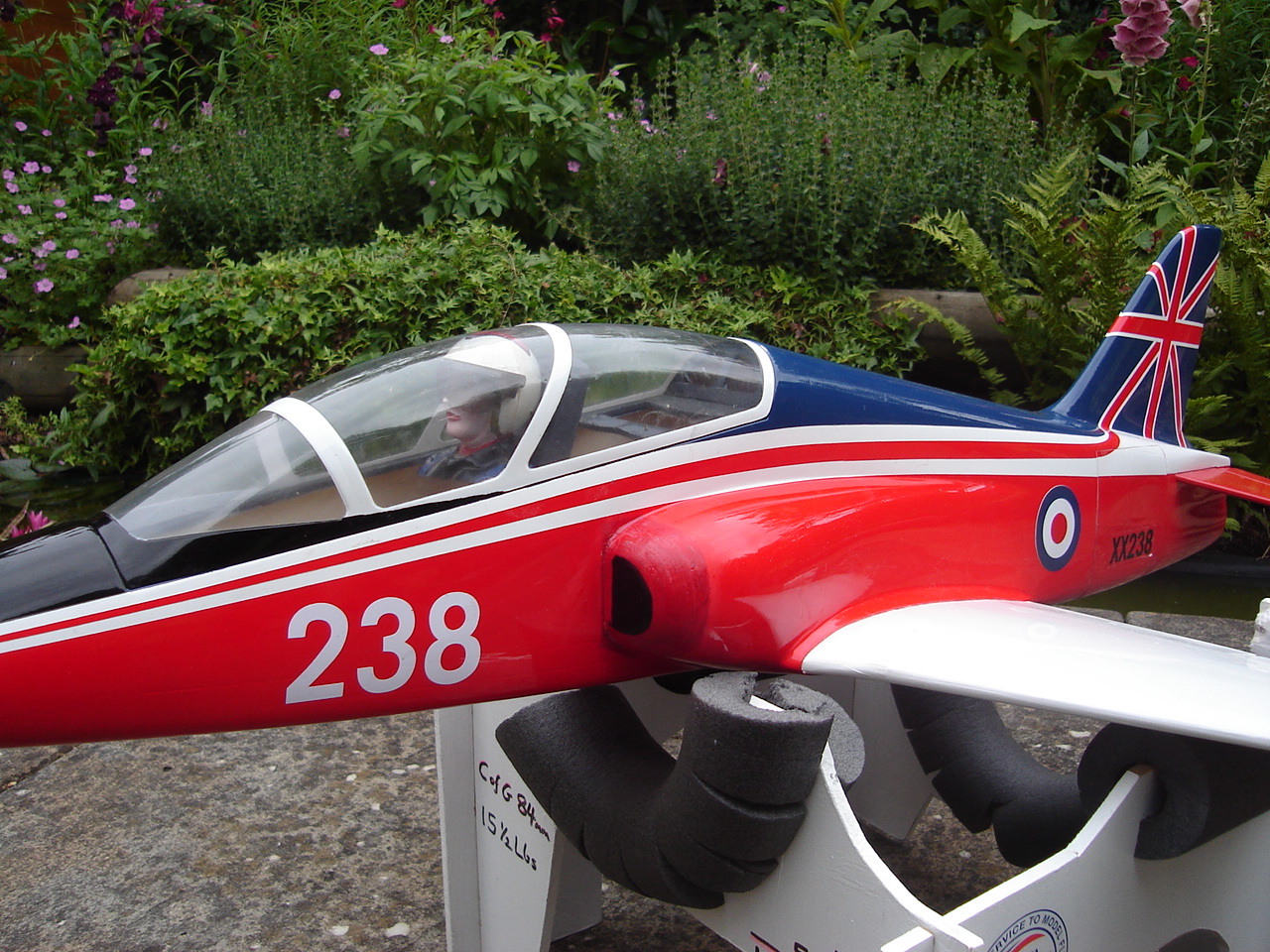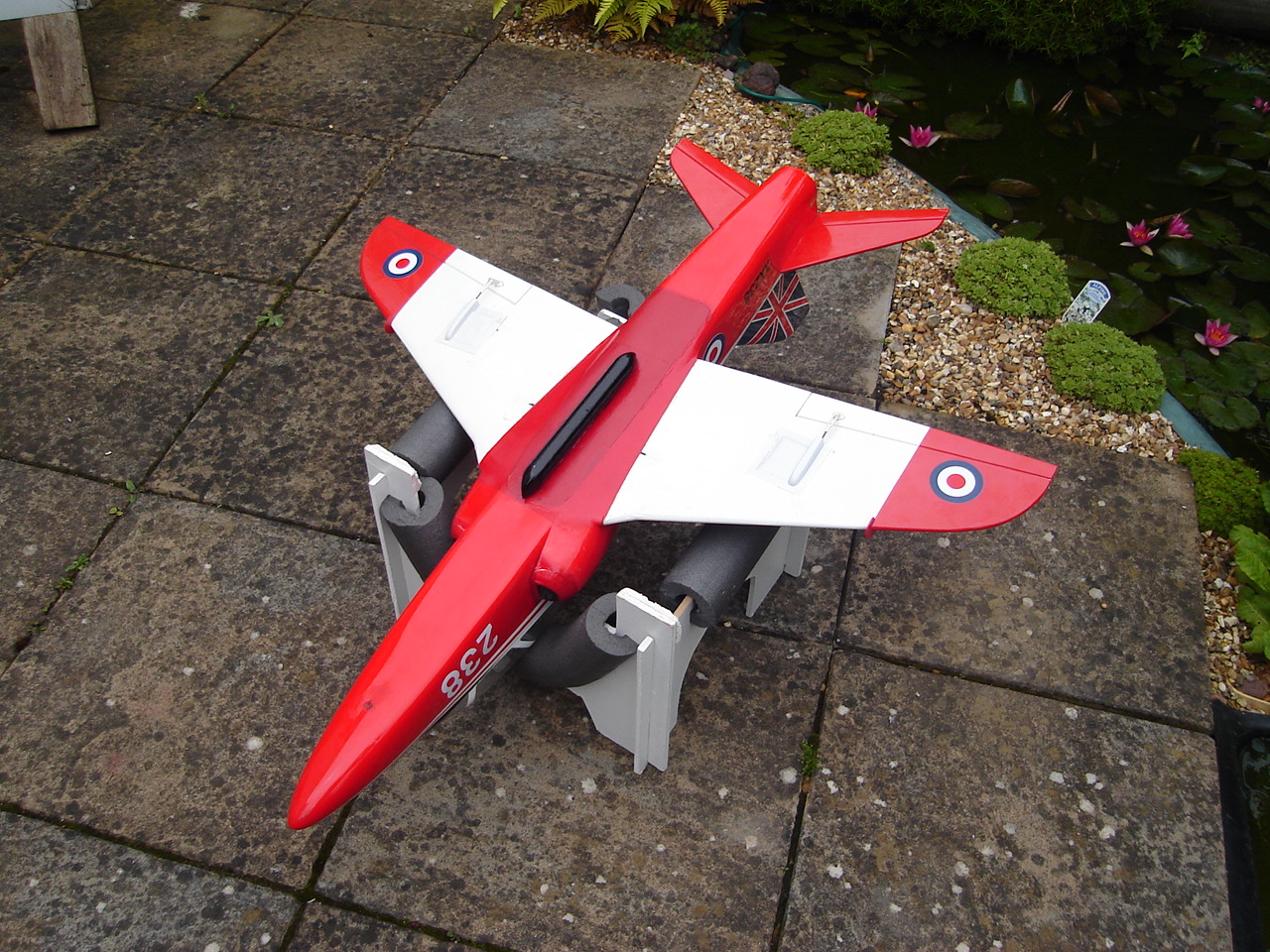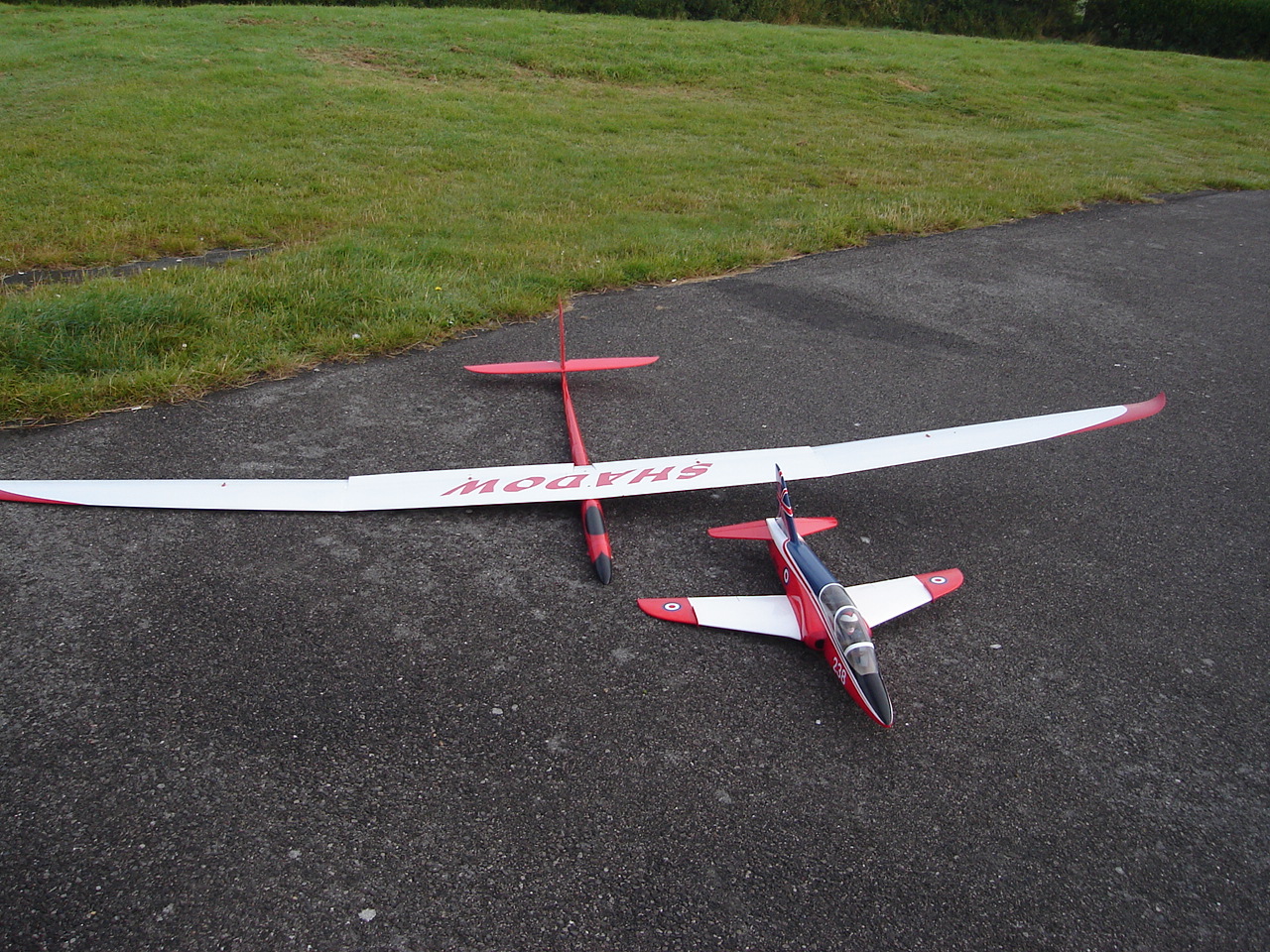Dave converts an E-Flite Hawk to fly as a glider.
Many years ago I saw a Red Arrows Hawk for sale in a local model shop. It had been built to have a nose mounted motor which had been removed leaving an ugly hole .I wondered if it would fly as a glider if the original pointed nose was rebuilt .I did buy it and made the necessary changes. It was only 56 ins wing span and weighed a heavy 6 Lbs. Despite this it flew very well in a strong wind on a good hill. 25 years later I still have it but it lays damaged and unlikely to fly again. This aspect of our hobby is now called PSS ie Powered Scale Soaring,there is a web site at pssaonline.co.uk. Since then I have built 3 spitfires, a Tiger Moth and a Me 109.
Recently I was looking through the BMFA web site and saw a Hawk for sale .It looked beautifully finished in a red, white and blue colour scheme. The add said it was an E-Flite model and was in good condition, having only flow 6 times. I checked the E-Flite web site and it said it was 864 mm (33ins) span and weighed 1.3 Kgs (46 oz) .I contacted the seller and negotiated a reduced price for omitting the RX and Lipo.
Having got the model home, I could check it out in more detail. The body is constructed from light weight fibreglass and the wing is built up from balsa. It is powered by a large ducted fan accessed through a side hatch .It has fixed undercarriage with a steerable nose wheel, but no rudder. The air intakes are large and I was surprised to find a grid of holes under the body allowing more air into the fan. I wanted to check the actual weight as a powered model so added a spare Rx and Lipo. This came to 1.2 kgs (44 oz). The instruction manual says the wing area is 206 sq ins giving a wing loading of 31 oz /ft2. This may be okey for a powered model, but would be too heavy as a glider.
My aim in adapting the plane to a glider was to both reduce the overall weight and the drag. I also wanted to build in some form of grip enabling me to launch with one hand. So the first job was to strip out the motor, the undercarriage, the speed controller and the ply internal structures. Stripped down it weighed 18 oz., less than half the flying weight.
The rebuilding started with in filling the holes beneath the body. I had some spare 64 th ply, which was epoxied to the underside. The launching grip was made up from a tube of thin aluminium which was drilled through and held in place by two hardwood dowls. Ply blocks were then added to the front and back and shaped to mimic a fuel tank.
Next the large air intakes were in filled with light ply and shaped to reduce the frontal area. The empty canopy was then fitted with a pilot’s head and seat to give a more realistic appearance.
Finally a larger elevator servo was installed with RX and battery holders. With the fan removed the C of G would be too far forward if the battery was to be put in the nose, so it was positioned between the wings .The model now balanced on the C of G, as marked by the original builder. The final weight was checked and came to 29 oz giving a wing loading of 20 oz/ sq ft, a reduction of a third compared to the powered original. The instruction manual was checked and the control movements adjusted as recommended.
The first flight was at the Long Man, the wind was WSW at 15 to20 mph. Holding the Hawk up to the wind for the first time, the initial impressions were firstly how small it was and secondly how easy it felt to hold and launch. It went off straight and level, the control felt good. Having done a few passes it became obvious that it was loosing height in the turns and then regaining height when flying level. In a dive the nose would rise as the speed increased. I rolled it several times and these seemed okey. I tried to fly inverted, but this required the elevator to be held fully forward and so was difficult to sustain. Finally, I tried several stalls but the response was not as I would have expected. On the first attempted, I pulled back on the elevator very slowly, the nose rose and it slowed down, then at half back stick the nose began to bob up and down, I continued to pull right back to full movement and still it would not fully stall. The elevator just didn’t have the control authority and it kept bobbing until I released the controls and it recovered to normal attitude. The second time I pulled back quicker and the nose rose higher before it fully stalled and fell off to the left.
When I had picked up the model the seller had told me that if I was careful with the power I could get up to 6 minutes per flight. Well, as I had flown for over 30 minutes so I climbed up to the top of the hill and made a landing.
Walking back to the car, I made a mental note of the changes that needed to be made. They were ;- Increase the elevator throws and centre with more up trim.
- Reduce the over sensitive ailerons by increasing the % Expot.
- It had felt very nose heavy so check the C of G and move it back a bit.
Back home, I made the changes to the controls and checked the instruction manual to see were the C of G was recommended. I had put it at 84 mm back from the leading edge as marked by the seller. The instructions said 80 to 90 mm, which is a broad range for such a small wing. So, for the next flight I moved it back to 86mm.
The second flight was again at the Long Man, this time in a 12 to 15 mph SW. The lift was not as good as the day before and both 10 minute flights ended with forced landing on the slope face. I again felt that the C of G was to far forward and at home I added some tail lead to move the C of G back to 88mm.
The third flight was again at the Long Man in a 25 mph WSW. The lift was much better and the Hawk easily reached 300 ft .The controls felt good and I managed several fast flybys and a big loop. Again the C of G still felt too far forward.
At home I checked the old Hawk to see were its C of G was marked .It was at 47% ,compared to the new Hawk which was at 42%.If I was to move it back to the 47% then that would be at 99mm behind the wing ,that is 9 mm behind the recommended rearward maximum .I added some more lead and had two more flights moving the C of G eventually back to 94mm. It flew much better and would sustain inverted flight holding 80% forward stick.
During the earlier flights I had noticed that it was difficult to orientate because the wing has the same colour scheme top and bottom. So my last change was to paint the underside all red making it much easier to see.
Since starting to rebuild the Hawk I have been checking You Tube and found about several films. On one they had added a rudder and flaps, another had fitted lights. All but one had left the fixed undercarriage on which never looks good on a jet. The one that had removed the undercarriage was trying to hand launch, holding the plane behind the wing. This looked very awkward and the model did not survive the third attempted. Another flyer had fitted a digital speed recorder and managed a 98 mph flyby.
So, having now finished the building and trimming. I can say this little plane is a joy to fly. Even if you are not interested in PSS, the Hawk makes an excellent glider for fun flying in 15 to 30 mph winds. If you are happy flying a Phase 6 then the Hawk should not prove to be a problem.
If I was to build one from new I would consider a few changes. Firstly I would extend the ailerons to make them full span flaperons and secondly build an all flying tailplane as the original .
How much is one? Well I have just seen a used one on the BMFA site for £60 !
Flying photos to follow.

